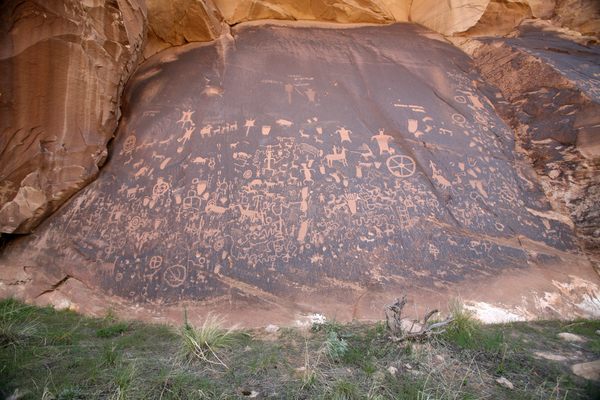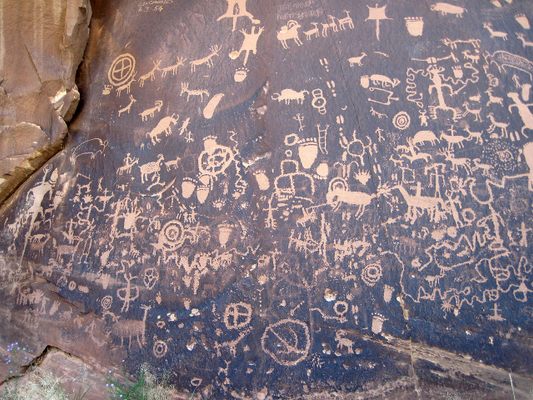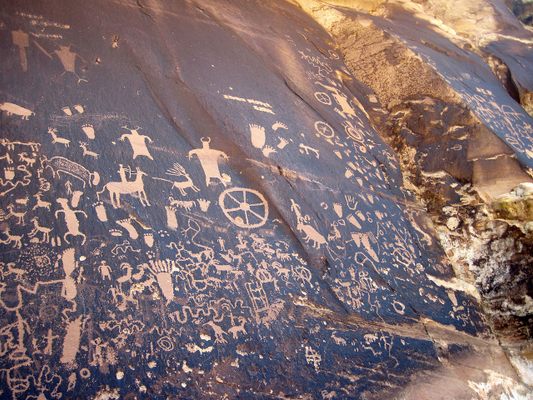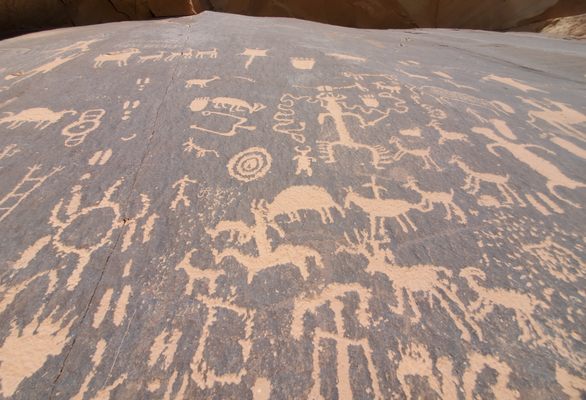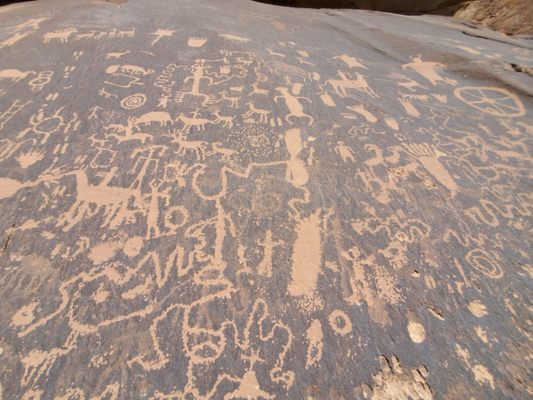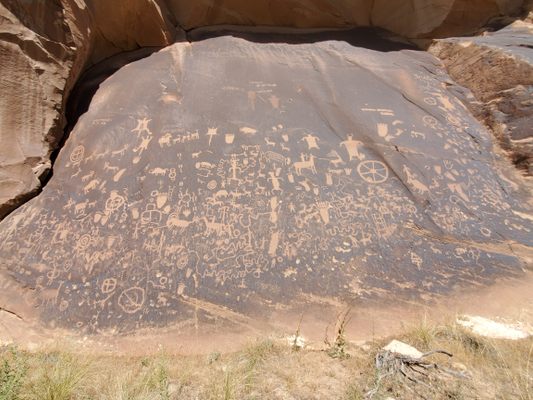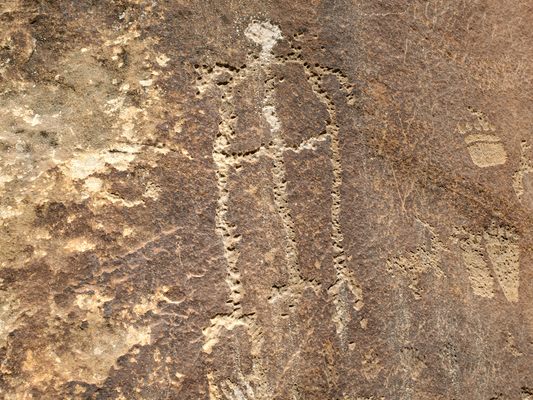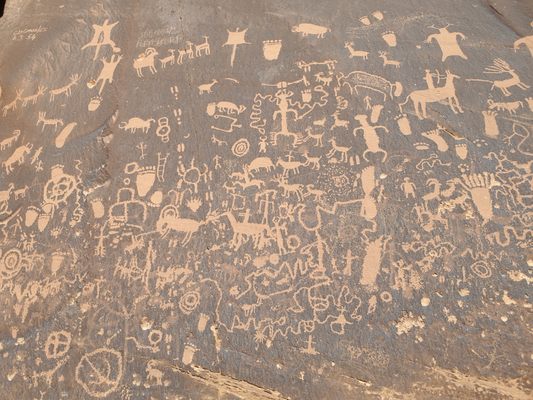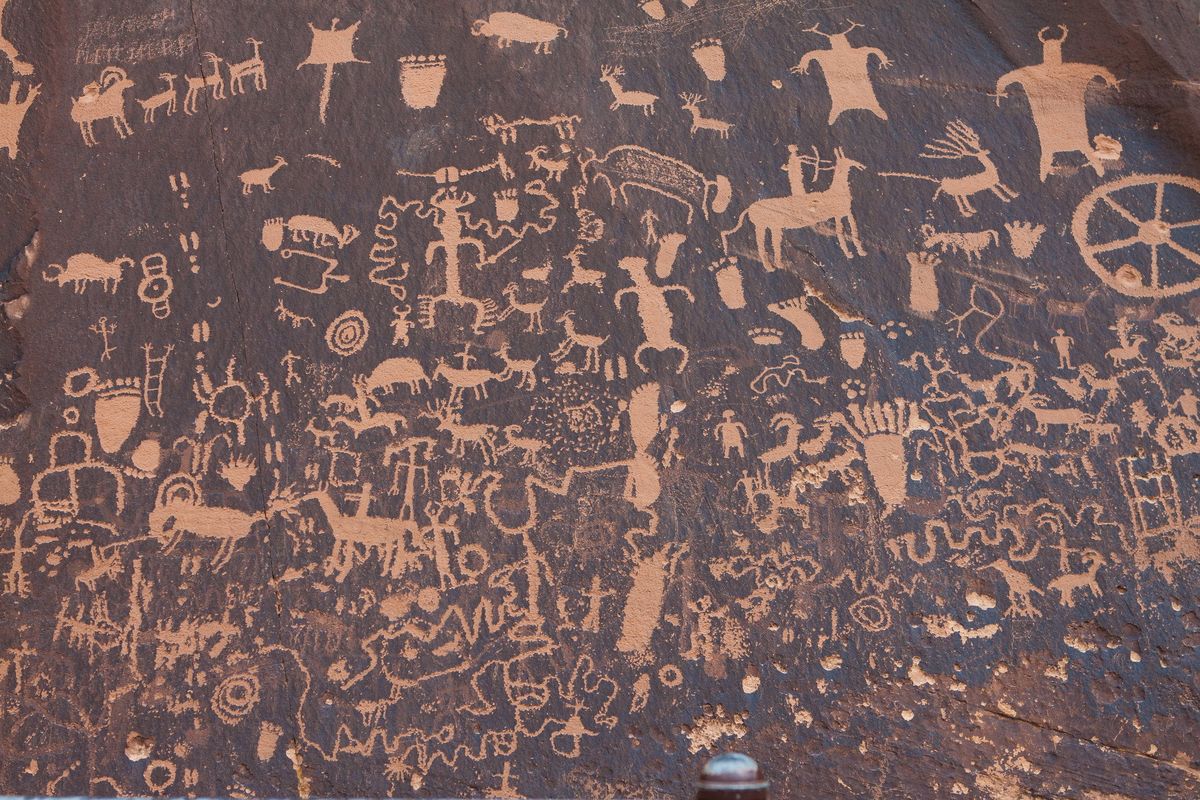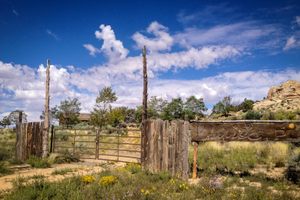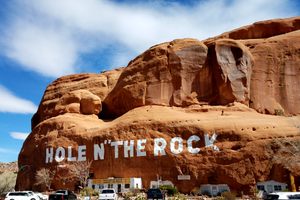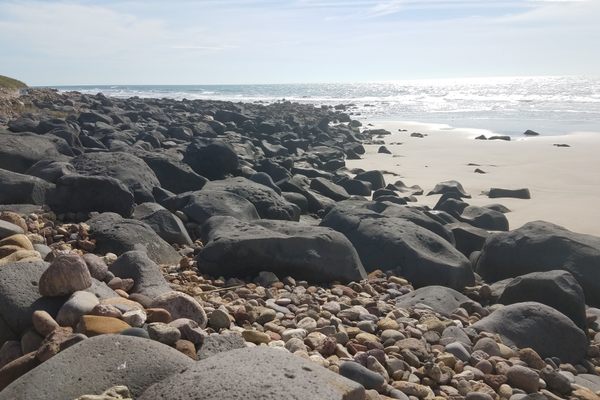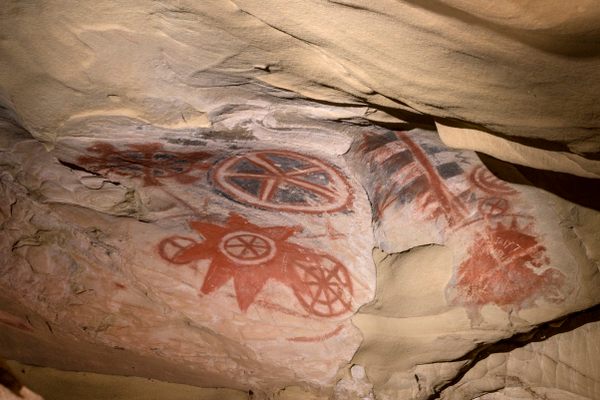About
For approximately 2,000 years, Native Americans have been carving petroglyphs into a single slab of sandstone located in San Juan County, Utah. While the precise meaning of the petroglyphs is not fully understood, the panel nonetheless provides an intriguing insight into human activities in the area.
Petroglyphs are hard to date, but archaeologists believe the earliest petroglyphs on Newspaper Rock likely date back to the Archaic, Basketmaker, Fremont, and Pueblo cultures, up until around 1300. Later, Utah, Navajo, and Anglo tribesmen added to the panel. In the Navajo language, the rock is aptly known as Tse' Hane, or “the rock that tells a story.”
About 650 individual designs cover the surface of the 200-square-foot rock, making it one of the largest collections of petroglyphs in the world. The petroglyphs were made by chipping away at the desert varnish, a dark coating found on exposed rock surfaces in arid environments, to reveal the lighter rock beneath.
The designs range from abstract shapes and symbols to more recognizable human and animal figures. Some of the stranger designs include wagon wheel-like shapes and bizarre, broad-shouldered humanoid figures with horns on their heads. Others depict deer, buffalo, bighorn sheep, lizards, snakes and turtles.
More recent carvings, beginning around 650 years ago, show men on horseback, some armed with bows and arrows. The relative age of the petroglyphs can be determined by the amount of desert varnish covering the figures, with the older designs typically being darker in color due to the repatination of surface minerals.
Related Tags
Know Before You Go
The Newspaper Rock is located in the Bears Ears National Monument along Utah State Route 211 in San Juan County, Utah. It’s about 50 miles south of Moab, and 24 miles northwest of Monticello on the main road into the Needles section of Canyonlands National Park. The site is open year-round and access is free with no permits or permission required. This site is listed on the National Register of Historic Places.
Community Contributors
Added By
Published
October 9, 2019
Sources
- https://www.visitutah.com/places-to-go/parks-outdoors/bears-ears-national-monument/newspaper-rock-and-the-indian-creek-scenic-byway/
- https://www.americansouthwest.net/utah/canyonlands/newspaper-rock.html
- https://www.thevintagenews.com/2018/04/23/newspaper-rock/
- https://www.desertusa.com/newut/du_newut_vvc.html


